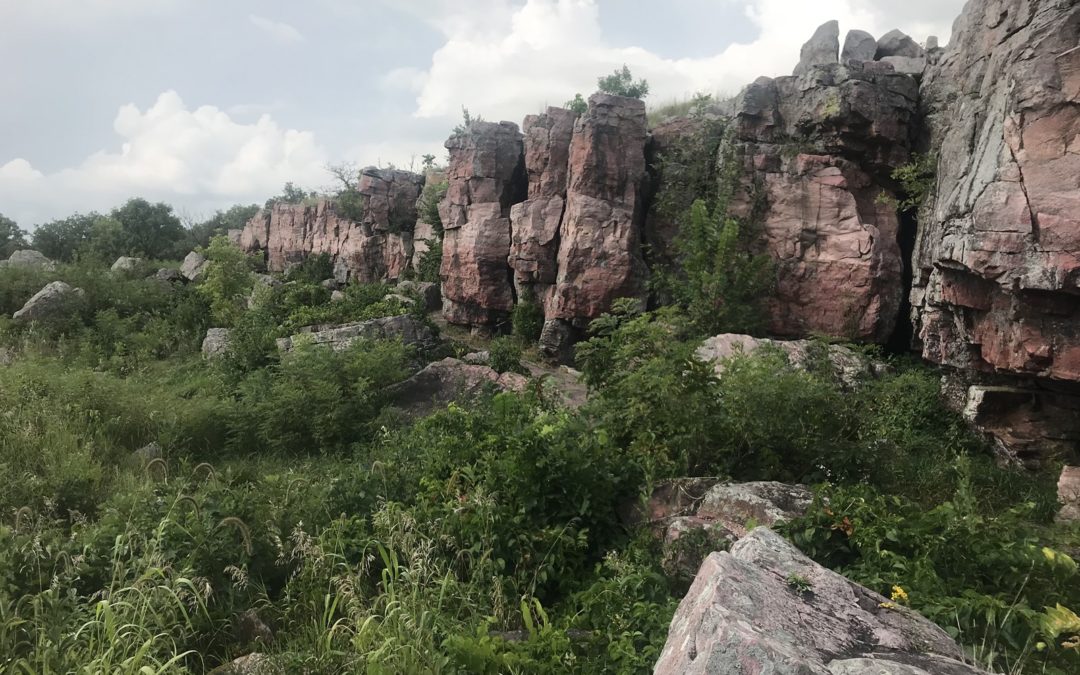We realized that this trip would be full of great sessions of sight seeing the classics of America: Grand Tetons, Yellowstone, Zion. We also realized, that some of the best places we go would come from local recommendations or spur of the moment places we hear about along the way. The first place of this latter category was a little known park in southwest Minnesota called Pipestone National Monument. Our friend Ian recommended it as a great location between Minneapolis and the Badlands, so we took him up on the recommendation. Going down a couple of dirt roads in Minnesota corn country led us to question the accuracy of our GPS. Sure enough though, we saw that classic National Park Service sign in the distance to the side of the road, as the row crops gave way to open prairie. 
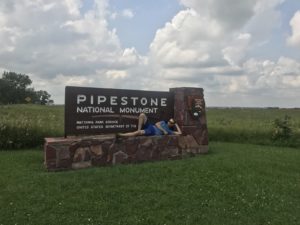
There are several ways in which national monuments differ from national parks, but many of them tend to emphasize locations that hold special significance for the human culture and history of our country. Pipestone NM is named after the pipes that were fashioned out of a special kind of stone found in the park, quarried by diverse Native American tribes for at least 3,000 years! The visitor’s center is a sight in and of itself, it was essentially a museum dedicated to Native American culture in the area, geology of the site, and prairie ecology. There were even local tribal members in the visitor’s center demonstrated modern techniques for fashioning pipestone by hand, and were friendly and open to discuss their work and their culture. The pipestone itself forms the base of the pipe, and generally a wooden shaft was fitted into the stone base. The stone was so sought after that tribes from different nations would make annual pilgrimages to harvest the stone. The location was also special in that it was a neutral zone, so tribes in conflict would put this aside to allow one another to harvest stone. It was clear that at this monument, the education about the ecology of the site took a backseat to the cultural importance of this sacred place, which provided the material to create a national monument in the first place. 
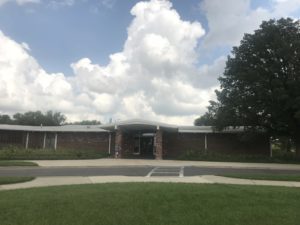
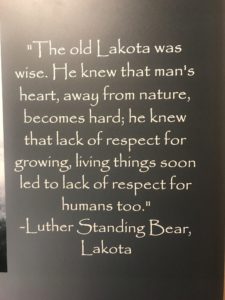
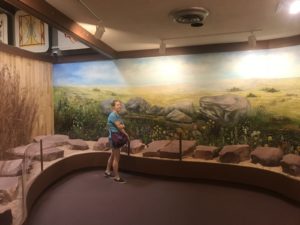
The stone in question is called “Caitlinite” by geologists today, and has a very special soft texture that is perfect for working with by hand to make pipes. Caitlinite is formed from ancient mud deposits, that under intense pressure and time, hardened into a layer of Caitlinite. That are sandwiched in between harder “Sioux quartzite” that are far too hard to be worked into pipestone, but interestingly were used to build the local visitor’s center! This small layer of Caitlinite was thought to have been brought to the surface through erosion by the Pipestone River which, combined with well-worn bison trails, were discovered by local indigenous people. A walk around the national monument pointed out many historical and sacred markers including active quarry sites, spiritual rock formations, and signed names of early European surveyors.

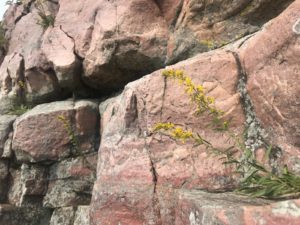
However, the ecological features outstanding too! An island of prairie in a sea of corn segues into groves of gnarly burr oak trees along creeks and drainages. The visual combination of fluffy clouds in the sky, open prairie, scattered groves of oak trees, and gorgeous lichen-encrusted rock formations were striking we kept walking slower and slower the more we soaked in. Rare prairie plants were common along the trails and falcon-like nighthawks swooped like fighter pilots above us, giving their harsh calls and gorging on insects coming off of the grassland. What was supposed to be a quick stop was a 3+ hour hike and learn! It gave us a good taste of what this area of the country may have looked like historically, and who might have lived there. So glad we stopped 🙂

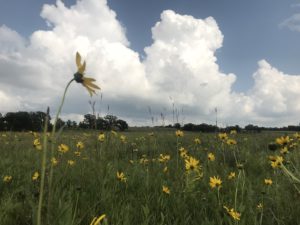

Audio Player

